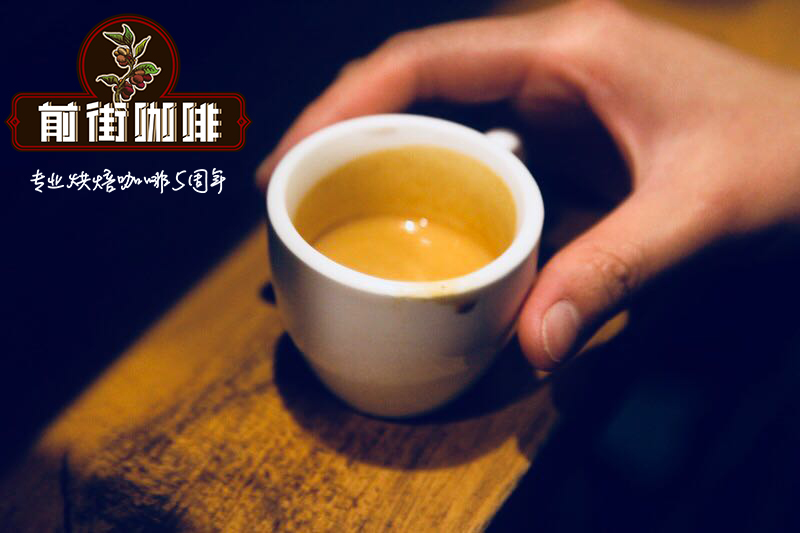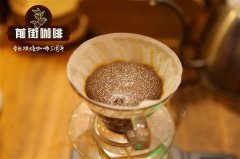The origin of Cuban Crystal Mountain Coffee Why Crystal Mountain is also known as "the Blue Mountain of Cuba"

The planting History of Coffee in Cuba
Coffee was introduced to Cuba from Domiga in 1748, but it was not until the arrival of French immigrants in 1791 that the coffee industry began. By 1827, there were about 2000 coffee plantations on the island, and coffee overtook the sugar industry as a major export product.
Due to historical and political reasons, the ownership of coffee cultivation experienced the process of private ownership and nationalization. After the Castro Revolution from 1953 to 1961, the nationalization and production of coffee estates were greatly reduced.
At that time, experienced growers fled Cuba because of the revolution, the government did not take measures to promote the process of coffee agriculture, and coffee cultivation went through a period of turmoil on the island.
The Origin of Crystal Mountain Coffee in Cuba
[CubitaCoffee], in Cuba, the cultivation of coffee is regulated by the state. Cuba has fertile land, humid climate and abundant rain, which can be called a natural treasure land for coffee cultivation, and suitable natural conditions provide a favorable natural environment for the growth of coffee trees.
Cuba's best coffee growing area is located in the Central Mountains, because this area in addition to growing coffee, there are quartz, crystal and other precious minerals, so it is also known as Crystal Mountain.
All the coffee is picked by hand, and the high-quality export coffee will be treated with water washing to remove defective beans and other impurities to the maximum extent. "Crystal Mountain Coffee" is almost synonymous with top Cuban coffee: soft and long-lasting acidity, clean taste, meticulous and smooth, excellent balance of acidity and bitterness.
Why do you call it the Blue Mountains of Cuba?
[Crystal Mountain] is geographically adjacent to [the Blue Mountain Mountains of Jamaica], with similar climatic conditions and taste similar to Blue Mountain Coffee, which is comparable to the Blue Mountains of Jamaica, so the Cuban Crystal Mountain has become a Jamaican Blue Mountain. The planting area for Cuban coffee is divided into three parts, which are planted on slopes and valleys at an altitude of 1000 meters to 2000 meters above sea level, with the highest proportion of Santiago de Cuba and Granma in the eastern part of the country. Secondly, the central villa Clara and Sancti Spiritus account for 20%, while the western Pinar del Rio accounts for 10%. These areas provide a quite comfortable growing environment for coffee beans, with an average temperature of 21 degrees in winter and 25 degrees in summer, moderate rainfall, average humidity distribution throughout the year, and deep and fertile soil. All planted Arabica (Arabica) varieties, to Tibica (Typica). In 2000, the United Nations Educational, Scientific and Cultural Organization (UNESCO) listed two coffee producing areas, Santiago and Guantanamo, as World Heritage sites.
Cuban Crystal Mountain Coffee is a typical island bean, taste clean, delicate, slightly sour but not exciting taste, with a special sweet flavor, very charming.
For example, Crystal Mountain is also known as the "Blue Mountain of Cuba".
Cuban small crystal, the color of raw coffee beans is yellow, the beans are slightly smaller than those in the Caribbean, the natural washing method is adopted, and the coffee beans are dried by the sun in the latter section, the defective beans and empty shell beans are less, and the moisture content of coffee beans is high.
Shallow roasting City (fragrance): when injected with water, coffee powder and hot water produce a strong sweetness of honey, soft taste with a little peppermint refreshing, wheat aroma will not feel uncomfortable (Kaka), coffee aftertaste in the middle of the tongue like mint gum across the refreshing, this is a good sour coffee without killing breath.
Due to the slightly lower moisture content of coffee beans (between Brazilian beans and East African beans), the bean body is softer, and the taste of esterification into deeper baked milk is very smooth and soft.
Re-baking (general C): the pure sweetness of wheat, the sweet and sour taste of blueberry jam is discovered only slightly, or it may be masked because the aroma of brown sugar water is too strong. The aftertaste is a very long-lasting sweetness of melons and fruits in your mouth.
Important Notice :
前街咖啡 FrontStreet Coffee has moved to new addredd:
FrontStreet Coffee Address: 315,Donghua East Road,GuangZhou
Tel:020 38364473
- Prev

Flavor characteristics of honey treatment of Victoria Manor in El Salvador-introduction of Victoria Manor Information
Professional coffee knowledge exchange more coffee bean information please follow the coffee workshop (Wechat official account cafe_style) El Salvador Victoria Manor Honey treatment EL Salvador La Provictoria Estate Honey (Sweet treatment) the long-lost Central American sweet producing region El Salvador is here again, this time we found the Santa Ana volcano in El Salvador.
- Next

Introduction to the flavor characteristics of medium-grain coffee, that is, robusta coffee, compared with Arabica coffee
Tower species (Latin name Coffee Robusta Linden), in the world
Related
- Detailed explanation of Jadeite planting Land in Panamanian Jadeite Manor introduction to the grading system of Jadeite competitive bidding, Red bid, Green bid and Rose Summer
- Story of Coffee planting in Brenka region of Costa Rica Stonehenge Manor anaerobic heavy honey treatment of flavor mouth
- What's on the barrel of Blue Mountain Coffee beans?
- Can American coffee also pull flowers? How to use hot American style to pull out a good-looking pattern?
- Can you make a cold extract with coffee beans? What is the right proportion for cold-extracted coffee formula?
- Indonesian PWN Gold Mandrine Coffee Origin Features Flavor How to Chong? Mandolin coffee is American.
- A brief introduction to the flavor characteristics of Brazilian yellow bourbon coffee beans
- What is the effect of different water quality on the flavor of cold-extracted coffee? What kind of water is best for brewing coffee?
- Why do you think of Rose Summer whenever you mention Panamanian coffee?
- Introduction to the characteristics of authentic blue mountain coffee bean producing areas? What is the CIB Coffee Authority in Jamaica?

